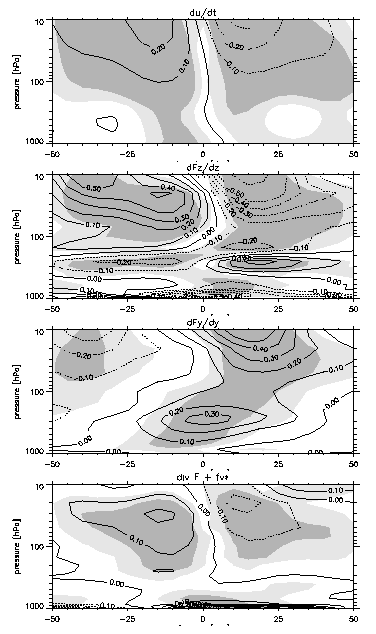Previous: Connection to the troposphere Next: A minimal model Up: Ext. Abst.
The wave forcing
To further study the relations between the eddy flux and the vacillations
we now present lagged cross covariances between the zonal mean
zonal wind and the terms in the zonal momentum balance equation,
i.e., the zonal mean wind tendency $\partial \overline{u}/ \partial
t$, the Coriolis term $f \overline{v}^{*}$, and the two components
of the eddy forcing
We chose the zonal mean zonal wind at 10 hPa and concentrate
as before on 60 N. The covariances with the tendency (fFig 5,
top) are easily understood: at 10 hPa large (small) values of
the zonal wind have been preceded by acceleration (deceleration)
and are followed by deceleration (acceleration). The vertical
tilt in cross-over between positive and negative covariances is
an effect of the downward propagation.
The strong similarity between the first and last panel in Fig.
5 shows that the downward propagation is driven by wave mean interactions
related to the waves resolved in the reanalysis. We also note
that the vertical wave flux dominates and that the horizontal
wave flux only plays a minor role in the stratosphere.

Figure 5 Covariance between the zonal mean wind at 10 hPa, 60 N and the
terms in the balance equation for zonal momentum as function of
lag (days) and pressure. Shading as in Fig. 2.
Previous: Connection to the troposphere Next: A minimal model Up: Ext. Abst.
